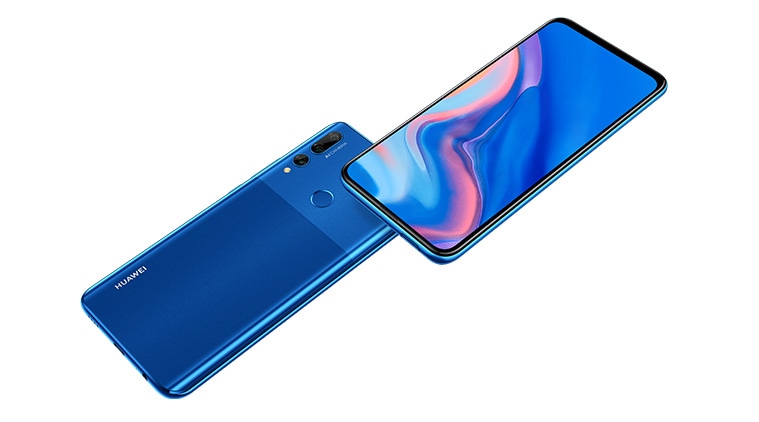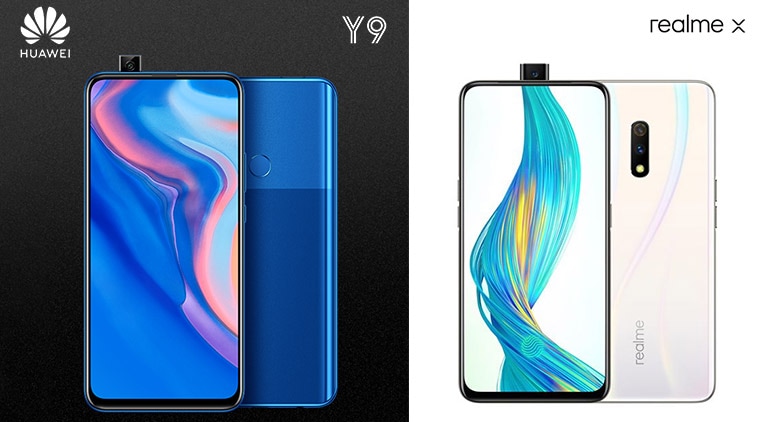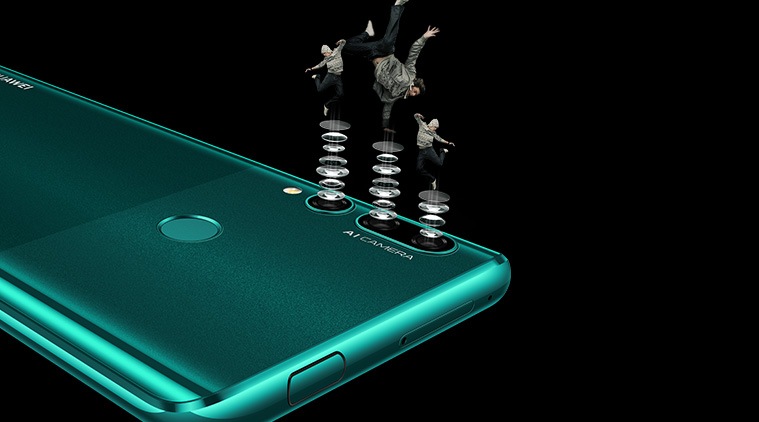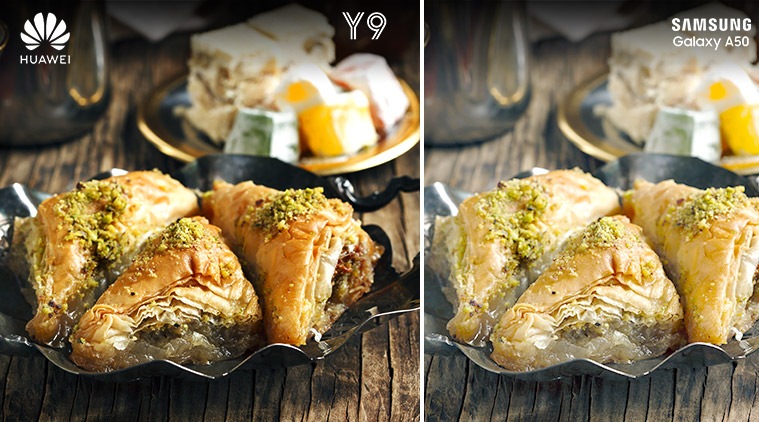
With the launch of the Y9 Prime, Huawei has thrown down the gauntlet to its rivals in one of the most competitive segments of the Indian smartphone market – the one in and around Rs 15,000-20,000. The first phone from Huawei to feature a pop up camera, the Y9 Prime has the potential to disrupt the market with what it brings to the table. But how does it fare against the current players? Well, you can get a better idea by seeing how it compares with two of the most prominent devices in its price segment – the Realme X and the Samsung Galaxy A50.
Looks
Huawei has a formidable reputation when it comes to design, having played a prominent role in making gradient design a rage. And the Y9 Prime shines against its opposition in this department with its Emerald Green and Sapphire Blue variants putting the plainer Galaxy A50 comfortably in the shade. The Realme X also cuts a very smart figure with its Space Blue and Polar White variants, but it too pales in front of the sleek and well-crafted Y9.

Display
When it comes to hardware, the Galaxy A50 sports a 6.4 inch full HD+ AMOLED display, while the Realme X brings a 6.53 inch full HD+ AMOLED display to the battle. The Y9 Prime, however, has the biggest display of the three – a 6.59 inch one, with a full HD+ resolution as well. You are simply getting more display delight on the Y9 Prime, with more space to view those videos and games.
Processor
Although all three devices come with very good mid-segment processors, the Y9 Prime more than matches its rivals. The improved HiSilicon Kirin 710F on the Y9 Prime is considered by many to be as good as if not superior to the Snapdragon 710 on the Realme X and the Exynos 9610 on the Galaxy A50.
RAM and storage
In terms of RAM and storage, the Y9 has an edge – it starts with 4 GB of RAM and 128 GB of storage, the same as the Realme X, but while the Realme X has no expandable storage, the Y9 Prime comes with memory card support. The Galaxy A50 on the other hand, starts with a 4 GB RAM and 64 GB storage option, lagging behind the others in on board storage.
Cameras

It is a battle between two rear triple camera set ups and one dual camera set up here. The Realme X might have a 48 megapixel primary sensor to boast of, but unlike the Y9 and the A50, it has no ultra-wide camera. The Y9 has a 16 megapixel main camera with a 8 megapixel ultra-wide shooter and a 2 megapixel depth sensor. One the other hand, the A50 comes with a 25 megapixel main camera, an 8 megapixel ultra-wide sensor and a 5 megapixel depth sensor. The Realme X has a powerful 48 megapixel main sensor but only has a 5 megapixel depth sensor, losing out on the ultra-zoom battle. In selfies, the Huawei Y9 Prime and Realme X come with 16 megapixel shooters, while the Galaxy A50 has a 25 megapixel snapper for the purpose. However, while the Realme X and the Huawei Y9 both have pop up selfie cameras, the A50 still uses the older notch technology to accommodate its selfie camera, thus eating up display space.

Battery

When it comes to battery, the Huawei Y9 and Galaxy A50 bring a massive 4000 mAh battery to the table, while the Realme X has a smaller 3750 mAh one. The Galaxy A50 too has a 4000 mAh battery.
Fingerprint scanner
The Galaxy A50 and the Realme X have in-display fingerprint scanners that let you unlock the phone by touching it. The Huawei Y9 on the other hand sticks to the more conventional and faster fingerprint scanner on the back of the device. It might not look as snazzy as the ones on its competitors but it simply works faster!
Software
Of course, all the hardware in the world is of little use, if it is not accompanied that software that allows you to leverage it. And it is here that the Y9 Prime steals a march over its opponents. While the A50 tries to stick to a relatively plain interface with Samsung’s One UI, Realme’s Color OS6 can be a little intimidating for those who have not used it before. The Y9 Prime’s EMUI 9.1, based on Android Pie, however, strikes the perfect balance between simplicity and functionality, allowing you to access a number of features which would otherwise not be available on other Android Pie devices. This is most obvious in the camera application, where users get access to a number of settings, allowing to do a whole lot more with their devices. Crucially, whereas we have assurances from authentic sources that the Huawei Y9 will get the Android Q update, such assurances have so far not come about the other devices.
Price
When it comes to price, the Huawei Y9 Prime starts at Rs 15,990 (an effective price of Rs 15,000), while the Realme X starts at a more expensive Rs 16,990. The Galaxy A50 is in a zone of its own at a much higher Rs 21,490 at the time of writing (although it is receiving price cuts from some retailers). There is only one very clear winner here!
Acting as an icing on the cake are various offers accompanying the purchase of a Y9 Prime. Buyers can get instant cashback of Rs 500 on payments made via Amazon Pay, while SBI debit / credit cardholders can avail an instant discount of 10 percent. Offline customers who have pre-booked the device will get the Huawei Sport BT headphones and a 15,600 mAh power bank free of cost. Furthermore, Jio subscribers are eligible to get cashback of up to Rs 2,200. In comparison, those who purchase a Realme X can get Jio Benefits worth Rs 7,000, access to Paytm First and 10% cash worth Rs 1500 from Mobikwik. The Galaxy A50 has got a special price cut taking it to Rs 18490, and those using a Flipkart Axis Bank Credit Card to buy it from Flipkart will also get 5% unlimited cash back. We honestly feel the power bank and the bluetooth headphones thoroughly clinch it for the Y9 Prime here!
Overall
When viewed in entirety, one cannot but notice that the Huawei Y9 Prime has a number of aces up its sleeve over its competitors. It has the best balance of design, hardware and software, and tops it all off with the lowest price of the three as well. The Realme X might have a higher megapixel main sensor but loses out in terms of battery and software (as well as processor, some might say) while the Galaxy A50’s magnificent AMOLED display is ruined by a notch. And while both the Realme X and Galaxy SA50 can boast of fingerprint sensors in the display itself, it is the Y9 Prime’s old fashioned sensor on the back that works best of all. All of which makes the Huawei Y9 Prime a prime option in its price segment.
There you have it. The Huawei Y9 Prime 2019 has arrived at a time when the mid-range segment is heating up once again. The brand has really managed to push the envelope this time around and the Y9 Prime 2019 seems well-equipped to take on the other heavyweights in this segment.